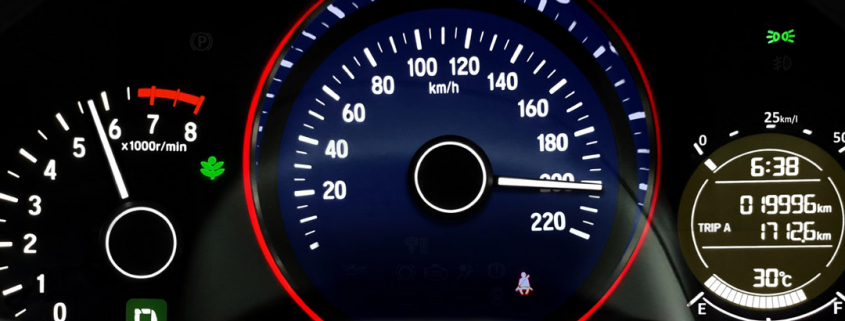7 Working Ways to Boost WordPress Loading Speed
Russell M. Rexroad (instantshift.com) shares 7 simple ways to improve WordPress loading speed. InstantShift is leading design and inspiration related community for web designers and developers daily resource, inspiration and premium web design and development. Image courtesy of razihusin via Bigstockphoto.
The primary thing a client encounters about your site, even before the outline or substance, is its stacking speed.
A normal web client anticipates that a page will stack between 500 ms (fast) and 2 seconds (moderate, yet satisfactory). On the off chance that you check your site’s stacking time and it ends up being over 2 seconds, consider your site at the danger of being skipped or shut by the client.
As a larger part of sites are based on WordPress nowadays, in this manner to support the speed and execution of your site, it is prescribed to comprehend the progression of page stacking speeds with WordPress, and to learn tips and traps that empower you to accelerate your WordPress site. Oh my goodness the best of them.
Use lightweight systems and topics
Perpetually, WordPress topics convey a decent lot of swell, which pulls down your site’s page stack speeds. This swell is connected to overwhelming stock pictures, wasteful and long codes, and so forth.
The best foot forward is to strike the correct mix between a subject’s visual interest and its page stack speeds. When searching for a WordPress subject, remember the accompanying focuses:
- Check audits of the topic, and particularly look for data on execution.
- Do execution trial of the topic’s demo pages.
- Pay special mind to default WordPress subjects, which are lightweight in code, and subsequently perform well.
- Look at Genesis and Thesis Framework-based subjects that are rumored for their execution.
Advantage from the energy of reserving
Reserving is a method of sparing your website pages as static pages, and serving them to clients without sending HTTP solicitations to the server. This helps with accelerating a WordPress site. What you can do to use this choice?
Initially, recognize a valuable WordPress storing module, read its documentation, and utilize it to reserve a few pages of your site. WP Rocket, and W3 Total Cache are among the prestigious ones.
You can execute program storing by utilizing terminate headers, which show to the web program which documents to ask for from the server, and which it can pick from the reserve of the program. With decreased HTTP asks for, page stack speeds make strides. To do this, you’ll have to add this code to the htaccess record.
1 <IfModule mod_expires.c>
2 # enabling expirations
3 ExpiresActive On
4 # The default directive
5 ExpiresDefault “access plus 3 months”
6 # Your favicon
7 ExpiresByType image/x-icon “access plus 1 year”
8 # Photos
9 ExpiresByType image/gif “access plus 3 months”
10 ExpiresByType image/png “access plus 3 months”
11ExpiresByType image/jpg “access plus 3 months”
12 ExpiresByType image/jpeg “access plus 3 months”
13 # CSS
14 ExpiresByType text/css “access plus 3 months”
15 # Javascript
16 ExpiresByType application/javascript “access plus 1 year”
17 </IfModule>
Prefetch areas, a lesser known strategy
Prefetch areas is a choice like reserving, where you adequately illuminate the web program to bring spaces early, so that the ‘get’ activity isn’t done at the season of the page stack, and consequently, the website speed progresses.
To empower this, you can add the prefetch space code to header.php record. Here are cases of usually utilized prefetch space codes.
For Google Fonts:
1 <link rel=”dns-prefetch” href=”//fonts.googleapis.com”>
For Google Analytics:
1 <link rel=”dns-prefetch” href=”//www.google-analytics.com”>
Get rid of pointless and substantial modules
WordPress modules are useful, in any case, excessively numerous modules mean an excessive number of solicitations on the server, that prompt moderate page stacking. Other related issues incorporate security dangers and memory issues. The best practice is to just send modules that your site can’t manage without.
You can utilize Plugin Performance Profiler (a module itself) to distinguish the most noticeably awful performing modules on your WordPress and supplant them with better choices.
Besides, there are modules that you scarcely utilize more than twice per month, (for example, thumbnail generators, and so forth.). It’s best to deactivate them, and simply enact them at the season of use. You can likewise check which modules you can just uninstall, and utilize some online devices.
Utilize CDN for better page stack speed
Known about CDNs (Content Delivery Networks)? It’s where content served to the client is conveyed from the geologically closest server farm, which enhances the speed of conveyance. This is on the grounds that lower exchange time, diminished jumps crosswise over firewalls and switches, and different parameters brings about snappier page loads for a geologically spread out gatherings of people.
The top of the line CDN administrations offer WordPress reconciliation modules, which help you rapidly set up and arrange your site to use the advantage of CDN. Over the long haul, this likewise causes you oversee have relocations better, on the grounds that the majority of the overwhelming burden (pictures) would be facilitated off the web host’s server, which just leaves the topic to be moved.
CDN Enabler is a free staggering module that you can execute in seconds. While choosing what you can stack from CDN, go for pointless excess. Indeed, even the favicon can be stacked through CDN. Simply drop it in the root organizer of WordPress, and add the accompanying code to the header.php record:
1 <link rel=”shortcut icon” href=”https://cdn.domain.com/favicon.ico” type=”image/x-icon” />
Pack weighty pictures
To place things into point of view, here’s a reality. A basic WordPress topic takes near 30 MB of storage room, while a visual-substantial site, for example, e-store, takes a few GBs of room for putting away pictures. Imagine a scenario in which you could decrease the picture record sizes by over half with garbled quality contrasts.
You can either resize and pack pictures in an OS based pressure instrument before you transfer them, or utilize a WP module like SmushIt to diminish the record size of pictures for your WordPress site.
Advance SSL handshakes
SSL or Secure Sockets Layer/Transport Layer Security is the methods by which web servers and customers encode and secure all movement. This has turned into the standard for secure HTTP exchanges and other movement over the web. One inconvenience of scrambling movement is when there is some overhead and idleness when the customer and server set up an association.
You can accelerate secure associations through upgrading SSL handshakes utilizing a CDN. The CDN does the overhead for you, in this manner decreasing the time spent in building up the underlying SSL session, and in addition keeping the protected association alive. This likewise gives you the additional advantage of guaranteeing a review A declaration, regardless of whether your own server or specialist co-op utilizes just a lower-review endorsement. What makes a difference is that your end-client’s programs, and in addition web indexes like Google, see the best grade SSL authentication gave by the CDN.
Expel old corrections from your database
Take it from me, your WordPress will back off in the event that you don’t deal with the database and keep it clean. You can do as such by constraining the quantity of post corrections. WordPress really makes an excessive number of corrections while you are composing the pot, and everything consumes room. You can cripple amendments, or set an utmost on the most extreme number of modifications. To debilitate, add the accompanying code to wp-config.php record.
1 define(‘AUTOSAVE_INTERVAL’, 300); // seconds
2 define(‘WP_POST_REVISIONS’, 5);
Attempt GZip pressure
We discussed picture pressure; however you can likewise pack CSS, Javascript, and site pages, at the server level, which diminishes the time in exchange of information to program. Here’s the manner by which you can do it:
- Go to checkgzipcompression.com and enter your site.
- Select your storing module, go to the Browser Cache settings, and put a check stamp on the Enable HTTP Compression box.
Conclusion
A decent performing WordPress implies a decent performing site. On the off chance that you don’t need your clients to get disappointed from your site’s speed, attempt these diverse tips and traps I’ve specified in this post with which you can use to enhance your WordPress site execution, and increment page stack speeds.
Do tell us how you figured out how to support your WordPress’ speed and did any of my tips helped you. cheerful testing.


Leave a Reply
Want to join the discussion?Feel free to contribute!